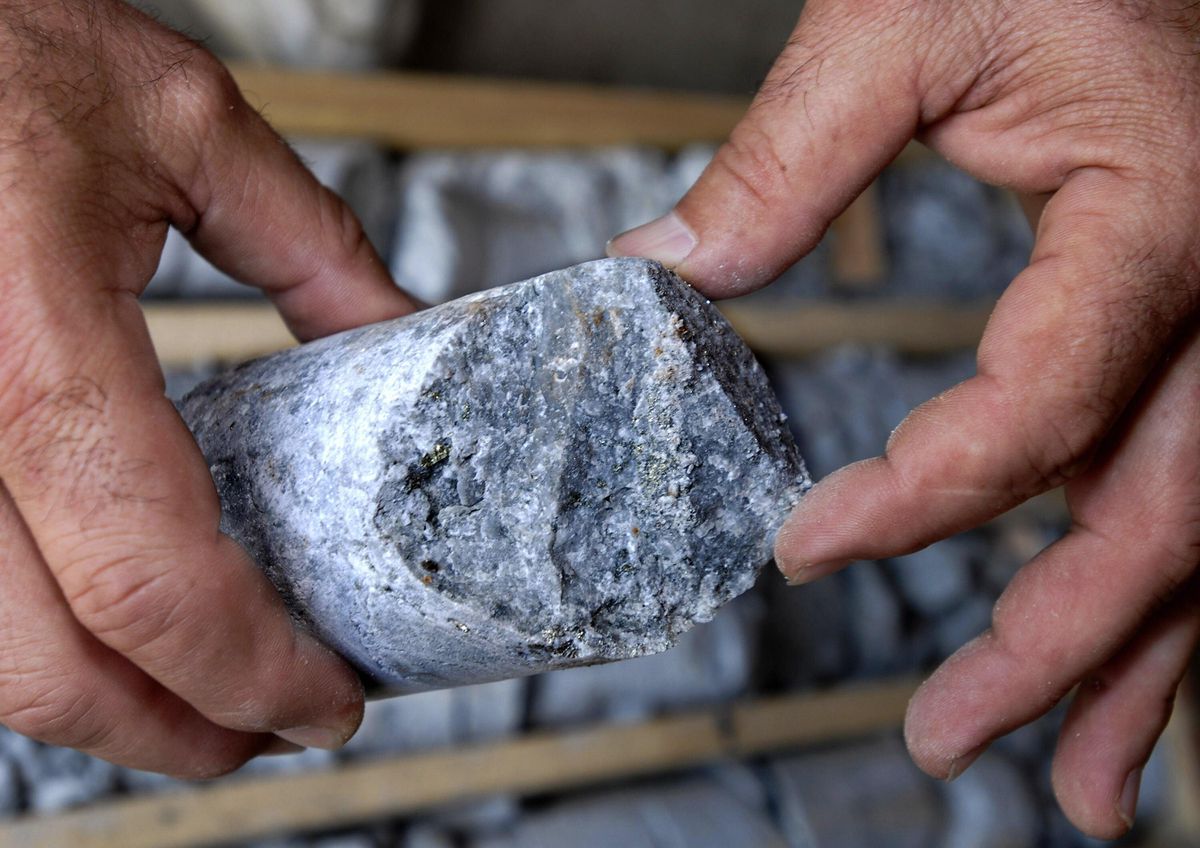[ad_1]
Somewhere in China there is a warehouse stuffed to the ceiling with molybdenum, a tongue-twister metal which most people call moly and which has a number of interesting uses ranging from oil drilling pipe to the steel used in armaments.
Since the middle of last year the price of moly has risen by more than 60% from around $7 a pound to $11.50/lb, down $1 on the peak of $12.50/lb reached earlier this month.

Molybdenum rich drill core in Armenia. Photo Hakob Barberyan, AFP via Getty Images.
Not a widely-traded metal, nor one generally mined on its own, most moly is produced as a by-product of copper mining with the presence of moly in an orebody sometimes the difference between a mine being a profit (or loss) maker.
Last year, according to an analysis of the moly market by Macquarie, an Australian investment bank, the global market was over-supplied by around 45 million pounds thanks to a Covid caused drop in demand.
But this year the moly market is tipped to rebound with a deficit of 16 million pounds developing as demand outstrips supply.
The problem, which foxed the bank, is trying to understand the sudden shift in the market with the only explanation being that Chinese buyers were busy in the second half of last year soaking up the moly surplus and driving the price higher.
Massive Chinese Imports
“The big driver of the molybdenum price recovery last year was a massive rise in Chinese imports,” Macquarie said.
“Total net imports reached 100 million pounds, up from only 1.4m/lbs in 2019.
“In essence, the entire surplus created by the rise in non-Chinese production and the collapse in non-Chinese demand was bought by China transforming the market from one of over-supply to under-supply, leading to the price recovery.”
Macquarie said its detailed analysis of the Chinese market showed that the main first use of the metal was in ferro-molybdenum which is used in the steel industry and accounts for 80% of Chinese consumption.

Element 42, molybdenum.
Moly, which is element 42 on the periodic table, has properties which enhance the quality of steel used in oil drilling pipe as well as structural and stainless steel. It can withstand extreme temperatures without softening making it ideal for military armor and aircraft components.
Major sources of moly and copper mines in Chile, Peru, Armenia and the U.S., especially the Kennecott mine in Utah.
Macquarie said after an estimated fall of 4% in moly consumption last year it expected a 6.8% increase this year leading to the deficit of 16 million pounds which means the price of the metal could stay high.
“Ongoing Chinese import demand plus no sign of over-stocking seems to suggest that real consumption could be stronger than we had previously thought, and this should keep pressure on prices.” the bank said.
[ad_2]
